Comfortable warm conditions are important when raising chickens. In winter, heating increases egg production. In a well-maintained poultry house, the yield of eggs in cold weather is almost at the level of summer harvest, so it is worth building a heating system. There are many options for organizing heating in the chicken coop, but the choice depends on many factors and the material capabilities of the owner.
- Feasibility of heating
- When artificial heating can be omitted
- Temperature standards
- Natural heating
- Walls
- Floor
- Windows and doors
- Ceiling
- Artificial heating
- Electric heating
- Stoves and potbelly stoves
- Infrared heater
- Water or gas heating
- Features of the choice of a heater
- Combination of the method of keeping warm and artificial heating
Feasibility of heating
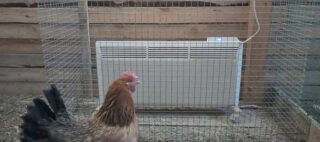
Optimal heating conditions during maintenance lead to the fact that chickens do not spend energy to maintain body temperature, grow well, and gain weight.
When kept in a cold house:
- the volume of feed used increases, and the egg yield is scarce;
- a cold occurs, immunity decreases, as a result, a certain number of pets die.
Frost appears on the interior surfaces in a shed without heating, which leads to an increase in humidity. These conditions increase the risk of infection in broilers and meat breeds.
When artificial heating can be omitted
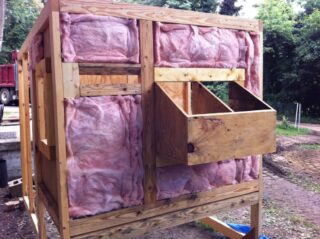
They do without heating in temperate climates, in warm zones. In this case, the natural state of the microclimate is sufficient for keeping the poultry stock, provided that there is a high-calorie feed.
The poultry house design is subject to certain rules:
- walls, roof, floor are insulated in the form of a layer between double fences;
- a thick litter is used on the floor, sawdust, straw, peat are taken.
The night temperature matters, which should not drop sharply in comparison with daytime values. If, under natural conditions, the house is kept at a normal temperature, heating can be dispensed with.
Temperature standards
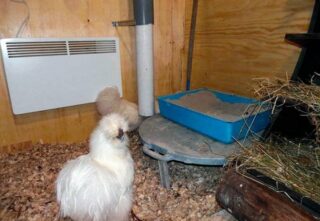
Minus indicators in the hen house will drastically slow down vital activity and productivity. Such conditions cannot be allowed, therefore there are certain indicators of a comfortable climate for pets:
- the most convenient range is from + 10 ° С to + 15 ° С;
- decrease to + 7 ° С is considered critical;
- in spring the temperature should be at + 18 ° С.
The absence of drafts plays a role, which is more destructive for livestock than a low temperature. In winter, the owners often move the chickens to a greenhouse, where there is light, heating, and the chickens have the opportunity to dig in the ground.
Natural heating
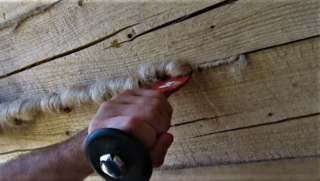
The essence of the method is to maintain the normative microclimate without the use of heaters. All cracks are caulked in the walls, roof, on the floor, hemp, twine, moss are used. Conditions are created in the capital department of the poultry house, temporary walking is not suitable for insulation.
With natural heating, it is recommended to observe the size of the poultry house so that the volume meets the standards:
- for 20 heads, a square of 15 - 20 m² is suitable, take into account the area of drinkers, feeders, and other devices;
- 4 - 5 m² will be enough for 10 broiler chickens, and meat and egg layers will require 7 - 10 m²;
- chicks are placed on 14 heads on each 1 m².
The bird is supposed to walk for a short period in winter, if the temperature is down to -10 ° C and there is no wind.
Walls
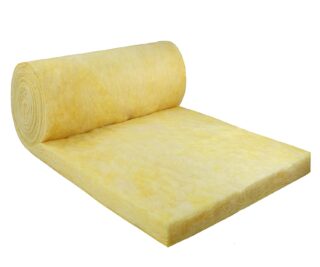
Double fences are made, a layer of insulation is laid between them, glass wool, inexpensive foam plastic are used. Frame options are most suitable for winter insulation.
In addition to wood, they are used:
- adobe;
- cinder blocks;
- brick;
- monolithic concrete.
The inner layer is sheathed with plywood, chipboard plates, and the outer layer depends on what kind of appearance of the building is needed. They use boards, lining, block house. Outside, a windproof membrane, waterproofing is placed under the finish. The degree of insulation depends on the thickness of the wall.
Floor
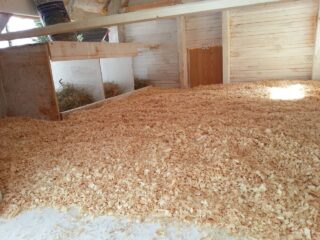
The construction also consists of two layers (subfloor and final covering). Mineral wool, expanded polystyrene, slag wool are laid between them. The top coating is made with planks, plywood.
In winter, a thick bedding of 15 cm or more is laid on the floor. Peat, sawdust, small shavings are used. The materials are mixed to improve the qualities. Peat is combined with chopped straw, such a layer absorbs moisture, then gives it away, therefore it regulates its level in the surrounding air. It is better to take sawdust from conifers, since resinous wood prevents the reproduction of harmful microorganisms.
Windows and doors
Most of the heat escapes through the openings. In the window frames, 2 - 3 glasses are placed, due to the air gaps between them, the transfer of energy is reduced. Outside, the openings are upholstered with plastic wrap so that the edges go over the walls. The film will not reduce the flow of light too much, but it will keep the windows from blowing by the wind.
Doors must be made with a rebate - a special strip along the perimeter. In addition, elastic seals are used. The door leaf is also insulated with foam, cotton wool, then sheathed with a protective layer.
Ceiling
Similar materials are used to protect the roof from the cold. The single-slope structure is insulated directly along the beams, vapor barrier and waterproofing membranes are nailed.
Roofing material is laid on top:
- slate;
- professional sheet;
- roofing material;
- metal;
- wood.
In gable roofs, a filing is made in the form of a false ceiling in order to reduce the amount of free space under the roof, which additionally takes heat in the chicken coop. If the roof is hinged, in the winter version, thorough insulation of the joints is provided, following the example of a doorway.
Artificial heating
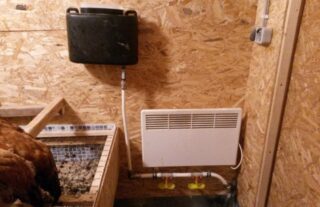
Installation of a heating system for a chicken coop in winter is expensive, and the operation also requires costs, so the owners of the poultry houses choose the best option in terms of efficiency and price.
Various options are used:
- electric heaters;
- homemade potbelly stoves, stoves;
- infrared devices;
- gas or water heating.
Incandescent lamps are placed if you need to raise chickens, they are hung in the right place and placed higher so that the chickens do not burn themselves on hot flasks.
Electric heating
Air heaters, heating blowers, thermal convectors are installed in the room. Electric heating also includes heating panels and underfloor heating. The number of pieces of equipment depends on the size of the chicken coop.
A chicken coop heater is equipped with automatic regulators for reading temperature readings, timely switching on and off devices. The intense heat also harms livestock and increases costs. The cables for the supply of electricity in the floor are run using a double structure, the panels are fixed to the walls.
Stoves and potbelly stoves
Such heating will require wood, coal or liquid fuel. The unit is located in the center of the hen house or at one of its walls. It is possible to build a furnace made of metal that works on the oil from a car engine, which is purchased inexpensively.
The furnace is built:
- brick;
- welded from metal.
Stove heating will require a chimney device, it is passed through the roof, the upper part of the wall and taken out. This type of heating is considered fire hazardous.
Infrared heater
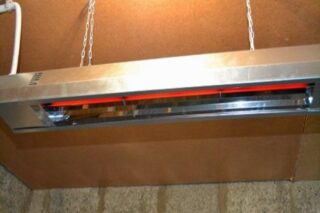
The devices differ in that they do not heat the air in the poultry house, but the surrounding environment. Walls, floors, fixtures then consistently heat the atmosphere, releasing the stored energy.
The bird enters the heated nests, while the air in the chicken coop may be cold at first. Heaters of this type are mounted on the ceiling so that the radiation from the panels is directed perpendicular to the floor. For chicken coops for 10 - 20 heads, a power of 500 watts is used. The devices are also equipped with automation for coordinating work.
Water or gas heating
This method involves the installation of a system of pipes and batteries in the chicken coop. A solid fuel or gas boiler should be located near the house. Otherwise, you will have to pull the line a long distance, which will lead to heat loss. The pipes will have to be insulated with insulation to bring energy to the house.
This option is universal for large chicken coops, and is rarely used in home buildings.
Features of the choice of a heater
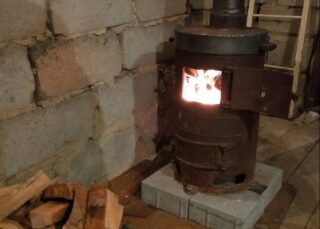
Take into account the squaring of the structure and the material of the walls. For example, it is better to build a stove or put a potbelly stove in a brick building, and in a wooden one there is a great danger of fire. If you make a heater for a chicken coop with your own hands, you need to follow the manufacturing technology of the unit in order to avoid a fire.
Of the electrical ones, oil radiators and convectors work most efficiently and cost-effectively. Store appliances have instructions that indicate the power and the recommended heating area.
Combination of the method of keeping warm and artificial heating
The method of insulating the house can and should be combined with artificial heating. To heat the room, you will have to spend much more money if you do not make protection from the cold.
The purpose of insulation is to prevent internal energy leaks through cracks, openings, thin single fences of the floor, walls, roofs. The purpose of heating is to heat the air inside to the required temperature.








